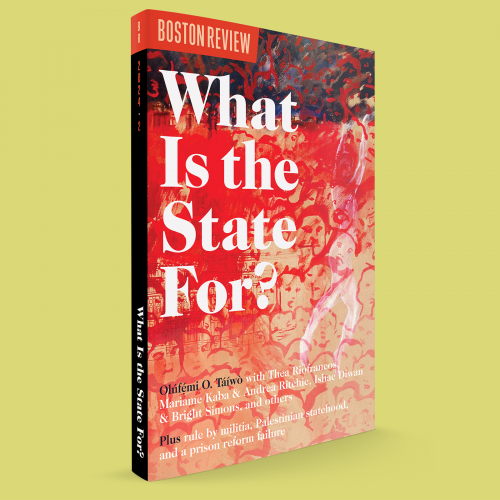In its broad strokes, I find Táíwò’s exhortation—“first dethrone fossil capital; then transform the world”—compelling. Fossil capital stands in the way of all manner of progressive priorities—both because there is no just society on a scorched planet and because fossil capital is a form of political domination, increasingly allied with a neofascist right. In this context, we need the state both for its disciplinary power (what other institution could enforce a phaseout and eventual ban on fossil fuels?) and for its infrastructural capacities (it is hard to imagine an energy transition at scale without public money and even public ownership).
But how can the state serve as both executive committee of fossil capital and righteous protagonist for climate justice? And what mix of social forces and political strategies would prove most decisive in this fight? As I see it, these are really the same question. Dethroning fossil capital can only be achieved by concerted organizing. Attempting to assign “temporal priority” to a political goal—even one as imperative as a livable biosphere—runs into the classic chicken-and-egg dilemma of any radical struggle to make the world anew.
In other words, the “two steps” in Táíwò’s update of Wallerstein must be as parallel as they are sequential. If one foot takes a step into state power, the other must deal a blow to its current forms. And this dance must occur on both sides of the porous divides between state and society, economy and polity. When the left ascends to government, it must not only confront the capitalist class as an external constraint but deftly evade and root out what Juan Carlos Monedero has called “snipers in the kitchen”: the many forces within the state’s variegated terrain, from the judiciary to the repressive apparatus, that undercut the ability and efforts of progressives in power to take on fossil capital. Given the sway of our opponents over the organs of government, triumph at the ballot box is not enough. Alongside electoral victories and legislative dealmaking, it took sophisticated coordination of forceful protest and mutual aid to get the Build Public Renewables Act passed last year in New York. These tactics are often seen as clashing, but in reality they are complementary. Policy wins are never simply the result of shrewd backroom politicking once progressive technocrats take office. They depend on organized pressure from outside the state.
These lessons also translate to any campaign to phase out fossil fuels—a goal that Táíwò correctly contends would require the strong arm of the state. I agree that there is a clear role for government mandates in restricting the supply of coal, oil, and gas. A broad range of policy options are available: ending fossil fuel subsidies; banning new extraction; and on the more ambitious end, nationalizing oil companies to ensure just transition for workers and the communities they support. But as vital as government action is, state officials cannot battle fossil capital alone.
One reason is speed. Public policy takes time, which is precisely what we do not have. The reality of a boiling planet requires immediate direct actions that disrupt the extraction and distribution of fossil fuels at critical chokepoints. Drilling rigs, offshore platforms, and vast networks of pipelines are sunk costs. A campaign of concerted sabotage that impedes the profitability of these assets could quickly drive a wedge between financiers and fossil fuel firms, as Andreas Malm has persuasively argued. And as proponents of nationalization as a route to phaseout have proposed, crashing the value of these investments would ease a government takeover.
Here too, government policies and movement tactics could work in tandem. Ending subsidies cuts into profits, as does blockading, occupying, or sabotaging physical plants; in the face of compounding action, desperation might weaken fossil fuel’s resistance to state takeover—and would certainly lower the price tag of compensation, should policymakers decide to soften the blow. (Or they could go Salvador Allende’s bold route: when the democratically elected socialist leader nationalized U.S.-owned copper mines in 1971, he deducted “excess” profits from their valuation, effectively canceling out any expected compensation.)
Such coordination between radical movements and their allies in the state might seem far-fetched at this moment. But the same could be said about all transformative processes before they took hold. Six months ago, I would not have predicted that an unprecedented, monthslong mobilization in solidarity with the cause of Palestinian freedom would bring well over a million Americans into the streets, including most recently nearly 400 demonstrations on college campuses. While the protests have not yet secured their immediate goal of a permanent ceasefire, they have certainly had an impact. Relentless organizing has finally pushed Biden to threaten to withhold U.S. weapon shipments, helped shift public opinion, pressured some institutions to divest, forced politicians to choose sides, and, most dramatically, called into question the president’s reelection in November.
What set of conditions could occasion a similar level of mobilization and militancy to pressure the state, from without and within, to “delink” from fossil capital and embark on an energy transition at speed and scale? It is admittedly hard to say, but this is the question we need to ask. The United States has seen massive climate demonstrations. Some 4 million around the world took part in protests in September 2019. (The largest U.S. gathering was in New York City, which saw 250,000 people turn out.) But it’s equally clear that the climate crisis has not seen the level of mobilization and militancy as either the George Floyd uprising or the ongoing Palestine solidarity movement. This is despite the abundance of opportunities: the United States is the top oil and gas producer on earth, and potential physical targets are myriad. Episodes of fierce resistance such as the ultimately brutally repressed protest camp at Standing Rock or the ultimately successful movement to prevent the Keystone XL pipeline are illustrative in their relative exceptionality.
One might conclude that extreme weather events—as deadly and as intertwined with both racial capitalism and imperial violence as they are—do not have the same galvanizing effect as spectacular episodes of state brutality. But side-by-side comparison has its limitations. The dramatic moments of social unrest in the summer of 2020 and again today are not isolated cases but rather two moments along the same trajectory. It’s hard to imagine American youth connecting the dots between apartheid and segregation, between policing and occupation—or calling to defund the carceral state then and divest from the Israeli state now—without the three prior cycles of protest against police brutality.
Could the lessons that protesters are learning today—analysis of tactics and targets; messaging discipline and communal care; political education and intersectional coalitions—be preparing them for pitched battles with fossil capital on the other side of the horizon of current possibilities? We can’t know the answer today, but the future of the planet depends on it being yes.
Independent and nonprofit, Boston Review relies on reader funding. To support work like this, please donate here.









